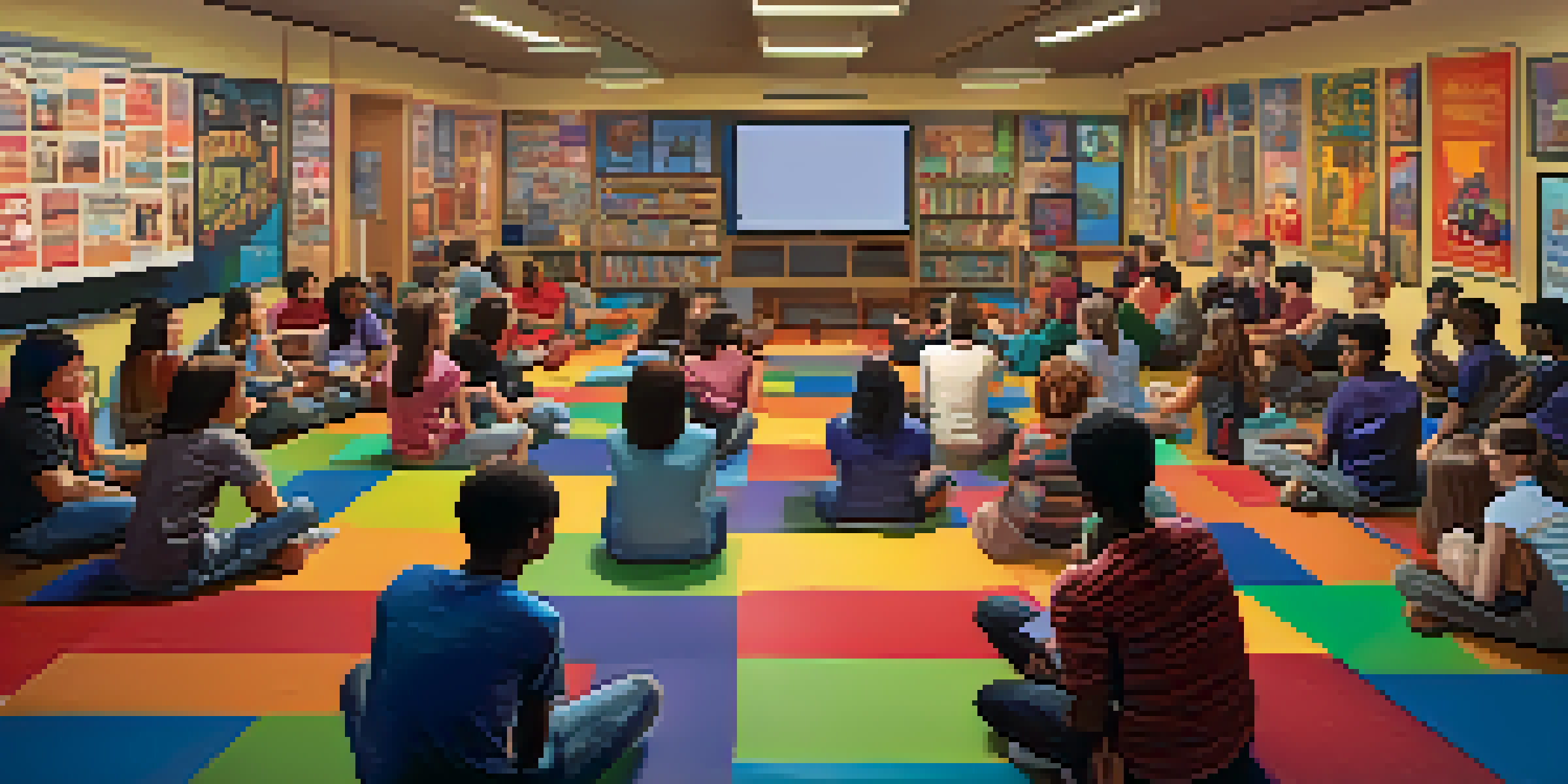The Influence of Film Genres on Learning Styles in Education

Understanding Learning Styles: A Foundation for Education
Learning styles refer to the various ways individuals process information. For instance, some learners may thrive on visual content, while others prefer hands-on experiences or auditory instruction. Recognizing these differences is crucial in creating effective educational strategies that cater to diverse student needs.
People learn more quickly when they are having fun.
By understanding these styles, educators can better tailor their teaching methods. For example, visual learners may benefit from infographics or videos, while kinesthetic learners might excel with interactive activities. This adaptability not only fosters engagement but also enhances retention of information.
Incorporating film genres into lessons can provide a rich resource for addressing these various learning styles. By aligning specific genres with the preferred styles, educators can create a more dynamic and inclusive learning environment that resonates with all students.
The Role of Film Genres in Enhancing Learning Experiences
Film genres like documentaries, dramas, and comedies each offer unique approaches to storytelling. Documentaries, for example, provide factual content that appeals to analytical learners, while dramas can evoke emotions and connect with those who learn best through narrative. Comedies, on the other hand, can make difficult subjects more approachable and engaging.

This variety allows educators to strategically choose films that align with their lesson objectives. By selecting the right genre, teachers can tap into students' interests and learning preferences, making complex subjects more digestible. For instance, a historical event might be taught through a dramatic film that captures the emotional weight of the time.
Diverse Learning Styles Matter
Recognizing different learning styles is essential for educators to tailor their teaching methods effectively.
Ultimately, the choice of film genre can significantly impact students' engagement levels. When learners are entertained and emotionally invested, they are more likely to absorb and retain information presented in the classroom.
Visual Learners: Engaging with Cinematic Techniques
Visual learners often grasp concepts more effectively when they can see them represented. This makes film an ideal medium for conveying information through imagery and visual storytelling. Elements like cinematography, color, and symbolism can enhance understanding and retention of key themes.
The mind is not a vessel to be filled, but a fire to be kindled.
For instance, using a visually striking film to illustrate a scientific concept can make the material more relatable. A documentary showcasing stunning nature visuals while explaining ecological principles can captivate visual learners and deepen their understanding. This method transforms abstract ideas into tangible experiences.
By incorporating visually rich films into the curriculum, educators can create powerful learning moments. The combination of engaging visuals and well-crafted narratives not only aids in comprehension but also inspires creativity and critical thinking.
Auditory Learners: Harnessing Dialogue and Soundtracks
Auditory learners thrive on listening and speaking, making films with strong dialogue and soundtracks particularly beneficial. The tone, pace, and rhythm of conversations in films can significantly influence understanding. For these learners, a film’s soundtrack can set the emotional context and enhance overall comprehension.
For example, a film that explores social issues might use powerful dialogue to present different perspectives, fostering critical discussion among students. Additionally, the music can evoke emotions that deepen the viewer's connection to the material, reinforcing what is being taught.
Film Genres Enhance Engagement
Incorporating various film genres into lessons can significantly boost student engagement and understanding.
Incorporating films with rich auditory elements allows educators to engage auditory learners effectively. This strategy not only aids in retention but also encourages active participation, as students can discuss and dissect the dialogue and themes presented.
Kinesthetic Learners: Interactive Film Activities
Kinesthetic learners often benefit from hands-on experiences, so integrating film with interactive activities can enhance their learning. For instance, after watching a film, students could participate in role-playing exercises or art projects that relate to the film's themes. This approach allows them to actively engage with the material.
Such activities can help solidify the concepts introduced in the film. By physically embodying characters or reenacting scenes, students can gain a deeper understanding of the subject matter. This method makes learning more memorable and enjoyable for kinesthetic learners.
By combining film with interactive elements, educators create a dynamic learning environment. This not only caters to kinesthetic learners but also encourages collaboration and creativity among all students.
The Importance of Diverse Film Selections in Education
Diversity in film selections is crucial to address the varied learning styles of students. By offering films from different genres, educators can cater to a wider audience and foster inclusivity in the classroom. This approach not only engages students but also exposes them to different cultures and perspectives.
For instance, incorporating international films can broaden students' understanding of global issues and enhance empathy. Films that feature diverse characters and stories can resonate with students from various backgrounds, making learning more relevant and impactful.
Interactive Activities for Kinesthetic Learners
Integrating hands-on activities related to films helps kinesthetic learners deepen their understanding and retention of material.
Ultimately, a diverse film curriculum enriches the educational experience. It promotes critical thinking, cultural awareness, and encourages students to see the world through various lenses.
Evaluating the Impact of Film Genres on Student Engagement
To determine the effectiveness of film genres in education, it's essential to evaluate student engagement. Surveys, discussions, and assessments can help educators gauge how well students connect with the material. Understanding their responses can guide future film selections and teaching methods.
For example, if students express excitement about a particular genre, it may indicate that the approach resonates with their learning styles. Conversely, if engagement levels drop, it may be time to explore other genres or teaching strategies. This feedback loop allows for continuous improvement in educational practices.

By prioritizing evaluation, educators can create a responsive learning environment. This adaptability ensures that all students, regardless of their learning style, can benefit from the power of film in education.
Conclusion: The Future of Film in Education
As educators continue to explore innovative teaching methods, the role of film in education will likely grow. Harnessing the power of various film genres can enhance learning experiences and cater to diverse learning styles. This integration not only makes lessons more dynamic but also prepares students for a world where multimedia communication is essential.
Looking ahead, it’s vital for educators to remain open to new genres and styles that can enrich the learning experience. The evolving landscape of film and media offers countless opportunities for creative teaching strategies that can engage students on multiple levels.
In conclusion, leveraging film genres in education can significantly impact student learning and engagement. By understanding and embracing the influence of film, educators can create a more inclusive and effective learning environment for all.